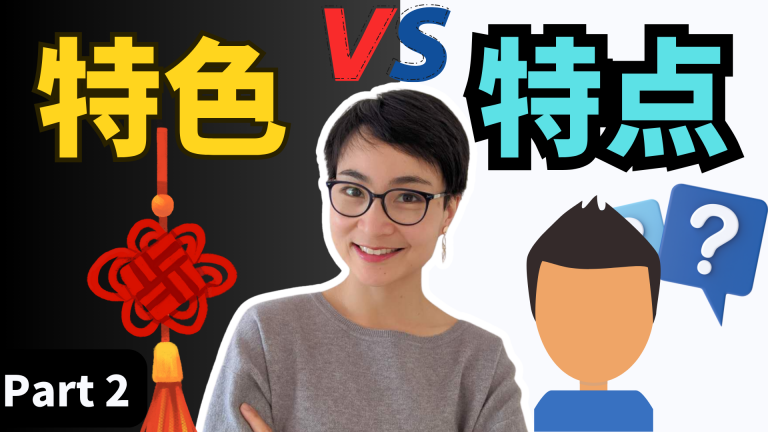当谈到学习汉字时,我在网络上看到过这样一种观点,警告人们中文汉字太难学,所以不要学习中文。
When discussing the learning of Chinese characters, I have encountered an opinion online that warns people about the difficulty of Chinese characters, advising against learning Chinese due to its complexity.
但很少有人说到,其实很多人学习中文汉字困难,主要是因为缺少了某一步骤。我小时候学汉字也很吃力,因为老师很少解释为什么要这样写,也不解释汉字的笔顺究竟是怎么一回事。也许这些问题也困扰着正在学习中文的你。
However, few mention that the difficulty many face in learning Chinese characters is often due to missing a certain step in the learning process. I, too, struggled with learning Chinese characters as a child because my teachers rarely explained the reasons behind certain writing methods, nor did they clarify the principles of stroke order in Chinese characters. Perhaps these are issues that are also troubling you as you learn Chinese.
问题1:理解中文笔画的基本顺序。我不知道你的老师是怎么教你的,但在那个时候,年幼的我根本无法理解中文的笔画有一个固定顺序。我不懂是谁规定了这个顺序,但是当我有了孩子之后,我开始试着从儿童的角度来理解规则。比如,我们可以想象,在古代,人们不是像现在一样用圆珠笔或者钢笔写字的,而是用刀刻在石头上和竹子上。那么,当你在切割一个东西的时候,你的受力方向是怎样的呢?当然是从上到下,从左到右。那么,这个习惯的一个基本原则,其实也是中文书写的基本原则。
Question 1: Understanding the basic order of Chinese character strokes. I’m not sure how your teacher taught you, but I couldn’t grasp that Chinese strokes follow a fixed order as a child. I didn’t understand who decided this order, but after having children of my own, I began trying to understand these rules from a child’s perspective. For instance, we can imagine that in ancient times, people didn’t write with ballpoint or markers as we do now, but rather, they carved with knives on stone and bamboo. So, in which direction do you apply force when you are cutting something? Naturally, it’s from top to bottom and left to right. Thus, this habit forms a fundamental principle of writing Chinese characters.
问题二:所有复杂的事情都是由简单的部分所构成。
也许你觉得中文笔画里的”竖弯钩“”横折钩“非常难理解,但其实你应该先从最基础的笔画开始理解。比如,如果你想在地上画一条地平线,你应该怎么画呢?当然是从左向右。如果有一个东西从天上落下来,它的方向应该是从上到下。如果有一个东西掉在地上弹起来,他应该怎样呢?当然是从上到下,然后再提起来。所以,对于中文笔画的学习,你要首先从最基本的笔画开始,逐渐过渡到复杂的笔画。你可以观看以下的视频来学习我们的课程。
Question 2: All complex things are composed of simple parts.
You might find the strokes in Chinese characters, like the 横折钩and竖弯钩, difficult to understand. However, you should start with the most basic strokes. For example, if you want to draw a horizon line on the ground, how would you do it? Naturally, you would draw from left to right. If something falls from the sky, its direction is from top to bottom. And if something falls to the ground and bounces back up, how would it move? Of course, it goes down and then up. Therefore, in learning Chinese strokes, you should begin with the most basic ones and gradually transition to the more complex strokes. You can watch the following video to learn more about our course.
第三,如果你希望掌握两千个汉字,那么你一定不是要记住一两千个汉字的笔画。
很多人在学习的最初阶段没有找到一个简单,基本的原则。不是从简单到难的顺序学习,而是非常随机地选择了那些笔画非常复杂,更适合于中级甚至高级学习者的汉字。比如,简单的“谢谢”这个词,再比如“你我”这两个字,不适合初级语言学习者用来学习中文的笔画。那应该怎么学习呢?你应该首先学习中文简单的六十个汉字。通过这60个字,你不仅可以学习中文书写的笔画顺序、笔画名称,而且这六十个字也将是你未来学习中文书写的偏旁的基本构成。
Thirdly, if you aim to master two thousand Chinese characters, you certainly don’t need to memorize the strokes of each one individually.
Many people struggle with learning because they do not start with the simplest and most fundamental principles. Instead of progressing from easy to difficult, they randomly learn complex Chinese characters that are more suitable for intermediate or advanced learners. For instance, the word “谢谢” (thank you) or the characters “你我” (you and me) are not suitable for beginners to learn Chinese strokes. So, how should one learn? You should start by learning sixty simple Chinese characters. Through these 60 characters, you will not only learn the order and names of Chinese strokes, but these characters will also form the basic components of the radicals you will encounter in your future Chinese writing studies.
正如复杂的笔画是由简单的笔画所一步步演变而来的,那么复杂的汉字也是由简单的汉字部件所构成的。如果你不理解简单,你又怎么能理解复杂呢?所以,首先打好一个扎实的中文书写基础,要比认识更多汉字来得更重要,因为这个基础将决定着你未来十年甚至二十年中文书写的书写体验。
Just as complex strokes evolve step by step from simple ones, complex Chinese characters also have simpler character components. How can you understand the complex if you don’t understand the simple? Therefore, establishing a solid foundation in Chinese writing is more important than recognizing more characters. This foundation will shape your Chinese writing experience for the next decade or even two decades.
第四,学习是分阶段的,每一个阶段你所要解决的问题是不一样的,所以你不能用最终目标来衡量现阶段所做的事情。比如,你想象着未来有一天你可以流利书写中文,但是你不能低估了目前你正在学习一笔一划的过程。
初级的中文书写一定伴随着这三件事情的发生:
第一,你开始知道每一个笔画的名称是什么。
第二:基础汉字60-120字的笔画书写规律;
第三,你开始知道复杂的汉字是由简单的汉字部件所构成的,其中一种部件叫做偏旁,这个偏旁可能代表火、水、冰,土,或者动物,植物,等等。
Fourthly, learning is a phased process, and the problems you must solve in each stage differ. Therefore, you cannot measure your current progress against your ultimate goal. For example, you may dream of one day writing Chinese fluently, but you shouldn’t underestimate the process of learning each stroke you are currently undertaking.
Beginner Chinese writing involves three key moments: First, you learn each stroke’s name.
Secondly, the stroke order of the basic 60-120 characters; thirdly, you begin to understand that complex Chinese characters are composed of simpler character components, one of which is called radicals. These radicals can represent elements like fire, water, earth, animals, plants, etc.
每个人的学习进度可能是不一样的,但是当你已经通过六十个汉字掌握了初步的中文汉字学习,那么接下来你将走入下一个阶段,就是结构的认知。
虽然中文看上去很复杂,但是它其实是有结构划分的规律的。就好像你走进一个人的家,每个人的家他的房间格局是不一样的,有的人一进入就是走廊,然后是客厅,然后是卧室和厨房;而有的人家一走进就是一个很大的客厅。所以汉字也是一样的,一个正方块的空间,它通过哪些方式可以来划分这些空间呢?每一个空间又用什么样的部件来表达它想表达的意思呢?这些不同的部件,有的表声音,有的传达意义。所以,有一个框架意识对于中文学习就显得非常重要。你可以观看以下视频来学习中文常见的12个框架结构。
Although Chinese characters may seem complex, they follow a structured pattern. It’s like walking into someone’s home; each has a different layout. Some may start with a hallway leading to a living room, followed by bedrooms and a kitchen, while others might open directly into a large living room. Similarly, Chinese characters are structured within a square space. How are these spaces divided? What components are used in each space to convey the intended meaning? These different components, some representing sounds and others conveying meanings, make it crucial to have a framework mindset for learning Chinese. Watch the following video to learn about Chinese characters’ common 12 structural frameworks.
每个人学习汉字的体验是不一样的,有的人从学习中文的第一天就爱上了中文书写,但有的人可能对他们的第一次体验不是很满意。但是没关系,我相信通过你不断地发现和理解,一定能找到适合你的方式。
Everyone’s experience learning Chinese characters is different. Some people fall in love with Chinese writing from their first day of learning, while others may not be as satisfied with their initial experience. However, this is perfectly okay. I believe that through your continuous discovery and understanding, you will find a method that works best for you.
最后,我再回答一个常见的问题:很多朋友都问:中文是否有一个固定的书写结构。
作为一个中文母语使用者,我要很诚实地告诉你几个我发现的现象:
第一,大多数中国人虽然他们的书写速度很快,但是在一些常见字上,大家书写的顺序是一样的,因为汉字书写最基本的部件,它的笔画是一样的;
第二,就算我和我的朋友是在同一个班级学习的,但是我们在人生成长的过程中会不断形成各自书写的习惯。当你走入社会,用中文去学习和工作,你会发现大家考虑更多的是怎么样更快速地书写,而不是坚持一套最标准的书写方法。但是,我要再次强调,在学习的初期,一个规范的书写顺序是非常重要的,因为如果你没有建立好一个规范的书写顺序,在你未来学习中文的过程中,你就会越来越混乱,因为每一个汉字好像都有一个独立的顺序一样。
Finally, let me answer a common question: Do Chinese characters have a fixed writing structure?
As a native Chinese speaker, I want to share a few observations I’ve made honestly:
Firstly, although most Chinese people write quickly, the sequence of strokes for some common characters is the same for everyone, as Chinese characters’ basic components and strokes are identical.
Secondly, even though my friends and I may have learned in the same class, we each developed our writing habits as we grew. When you enter society and use Chinese for learning and working, you’ll find that people are more concerned with writing quickly rather than adhering to the most standard method of writing. However, I must emphasize again that a standard order of strokes is very important in the early stages of learning. Without a well-established order, your future Chinese learning process can become increasingly chaotic, as each character seems to have its order.
当学习中文和掌握汉字结构时,以下几点是对学习者特别重要的:
- 规范书写顺序的必要性:理解并遵循正确的笔画顺序对于初学者来说是基础且关键的。它不仅有助于正确书写汉字,还有助于更好地理解汉字的结构和形成。
- 个体书写习惯的差异:即便是中文母语者,他们在汉字书写上也会有个人习惯的差异。这表明学习中文并没有绝对的“正确”或“错误”方式,而是可以根据个人的习惯和风格来调整。
- 不同工具和风格的书写差异:毛笔字、钢笔字和圆珠笔字之间存在显著的书写差异。这些差异不仅体现在使用的工具上,也体现在书写的目的和风格上。了解这些差异有助于学习者更全面地理解中文书写的多样性。
- 学习的分阶段性:学习中文是一个分阶段的过程,每个阶段都有其重点和难点。初学者应该专注于基础知识和简单的结构,随着能力的提高,逐渐过渡到更复杂的内容。
A quick summary:
- The necessity of Standard Writing Order: Understanding and following the correct stroke order is fundamental and crucial for beginners. It not only aids in correctly writing Chinese characters but also a better understanding of their structure and formation.
- Individual Writing Habit Variations: Even native Chinese speakers have writing habits regarding character formation. This indicates that learning Chinese doesn’t have an absolute “right” or “wrong” way; it can be adjusted according to personal habits and styles.
- Differences in Writing with Various Tools and Styles: There are significant differences in writing with a brush, fountain pen, and ballpoint pen. These differences are not only in the tools used but also in the purpose and style of writing. Understanding these differences helps learners to grasp the diversity of Chinese writing more comprehensively.
- Phased Nature of Learning: Learning Chinese is a process that occurs in stages, each with its focus and challenges. Beginners should concentrate on basic knowledge and simple structures, gradually moving to more complex content as their abilities improve.









